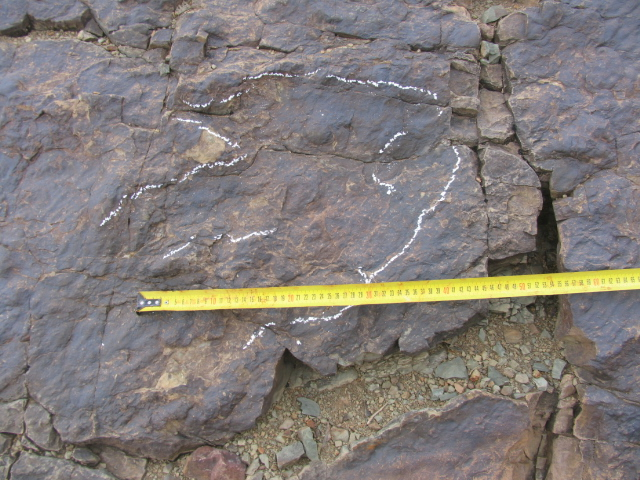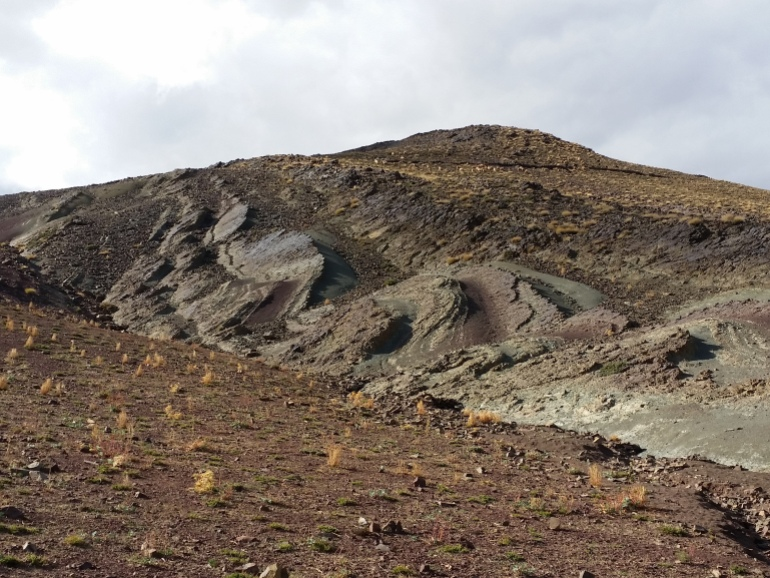A scientific study reveals the footprints of giant dinosaurs in Morocco
A recent scientific study revealed that an international team of researchers was able to discover new huge imprints of carnivorous theropod dinosaurs in the Imilchil region (Middle Atlas) in Morocco, and the results of the scientific study were published in the Journal of African Earth Sciences. ) on May 24 last.
The research team that conducted the scientific study consisted of research professors from Spain, the United States and Morocco, and the study’s research lasted about 4 years, with frequent visits to the imelshiel website launched since 2016.
Moussa Masroor, the Moroccan researcher involved in the study, told Al Jazeera Net via e-mail, "The study enabled us to accurately identify two new giant footprints of theropod dinosaurs, more than 70 cm long, and they date back to the middle Jurassic period, and in this study all the digital data related to these two fingerprints were presented. Describe them accurately.
The fingerprints of the theropods from the middle Jurassic period were discovered in 2016 (Al-Jazeera)
huge fingerprints
According to Moussa Masroor, a researcher at the Faculty of Science at Ibn Zohr University in Agadir, "These two large footprints in the Imilchil site in the Middle Atlas in Morocco are among the 26 huge footprints of theropods known globally."
It should be noted that some members of the study team had previously found a large theropod imprint in the Iwaridin region, in the direction of the city of Demnat in Morocco, at the northern foot of the High Atlas Mountains, from the Upper Jurassic period, reaching a length of 80 cm.
Moussa Masrour points out that what concerns the non-specialist audience in this scientific study "is that the discovery of very large fingerprints of the dinosaur proves the existence of dinosaurs of large sizes, even in the absence of the remains of the bones of these huge dinosaurs."
This scientific study seeks to value the previous scientific studies conducted in the Imilchil region, because it is large in area and is likely to be the largest site for the remains of dinosaurs and other animals that lived next to them in the Jurassic period in Morocco; He was known for many discoveries made by international research teams, in which Moroccan scientists from various disciplines participated.
Interesting comparison
In this study, the research team compared the footprints of the giant carnivorous theropod dinosaurs (bipedomets) in the world, to know the spatial and temporal distribution of these huge effects.
The team also classified the sites that contain the tracks of these dinosaurs according to their geographical location and according to their ages, in addition to analyzing the content of the traces of huge theropods. or geographical barriers.
Musa Masroor says, “The study provided an accurate description, through the calculations made in these cases for the two fingerprints, and the study provided a detailed inventory of all types of huge fingerprints known so far in the world, giving information about the size and geological time as well as the research in which the information was published.
The importance of this scientific study is that the comparison or classification carried out by the research team opens a new field for understanding the behavior of these giant meat-eating dinosaurs through ancient biology data, in addition to the fact that the research team has made an inventory of the most important scientific studies conducted on the Immelshil area in recent years. .
The Imilchiel region is rich in traces of dinosaurs and other animals that lived in the Middle Jurassic period (the island)
Challenges faced by the research team
The research team encountered a set of challenges to carry out this study, but the most prominent of them, according to Moussa Masroor, is that the Imilchil site is difficult to visit during the winter, because it is covered with snow, in addition to the fact that the Corona pandemic postponed some visits and confused the research program, according to Masrour.
In addition, there is the funding challenge, as some team members work with personal finance without assistance, and some receive simple assistance that does not even cover travel expenses, according to Moussa Masroor, and the first author was supported by the Spanish government.
Moussa Masrour concludes his interview with Al Jazeera Net by saying, "The Imilchil area remains very rich in traces of dinosaurs and other animals that lived in this period in the region, and I think that to capture all kinds of these fingerprints, it takes years of work from different scientific teams."
Source: translations - Al Jazeera Net
https://shahbapress.net/archives/25504?fbclid=IwAR0PmkFPpUq6XYeL3gUlsycvJM_eolsRPkfloP9HNe1NxWrzNnxz2sOdr5Y





